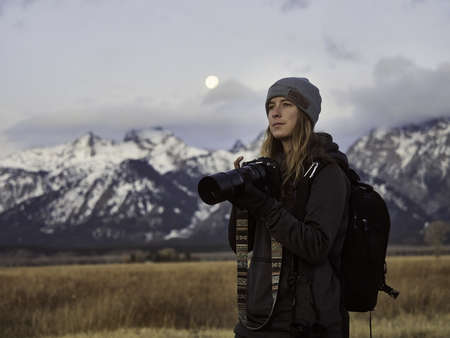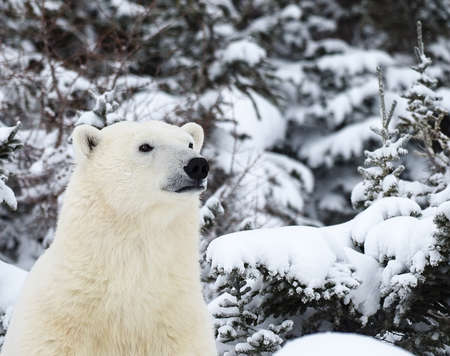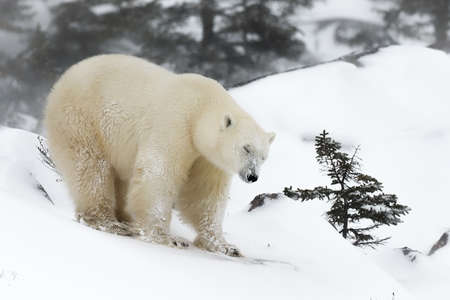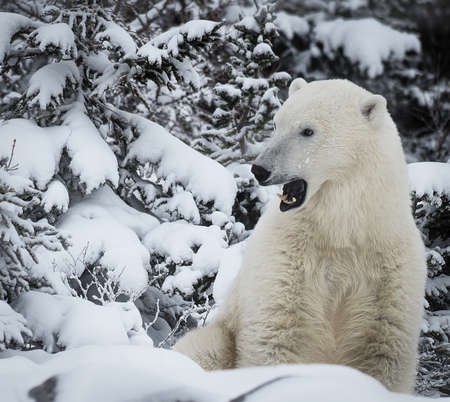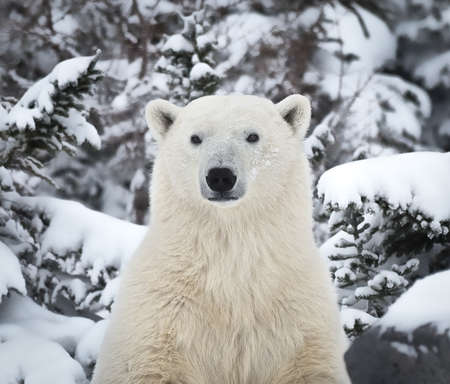Churchill, Manitoba is one of the best places in the world to photograph polar bears in the wild. In November, I traveled North in the fall to witness the annual migration of the bears to the shores of the Hudson Bay.
It was remote.
There are no roads leading to Churchill, Manitoba, known as the “polar bear capital of the world.” Travel can be daunting, as your only options are a multi-day train trip which is often delayed, or a round-about flight by way of Winnipeg. Nestled on the Western shores of the Hudson Bay, my plane landed in Churchill on an icy November morning.
I arrived just in time to catch the tail end of Polar Bear Season - the six week stretch when polar bears outnumber humans as they congregate on the tundra surrounding Churchill waiting for the ice to form on Hudson Bay. Once the ice forms, the bears make their way far onto the ice in search of seals to hunt. I was lucky to arrive just in time to spend a few days photographing the bears before they disappeared across the ice for the remainder of the winter months.
It was cold.
I mean like, really, really cold. While the cold definitely had me concerned for my fingers and toes, it was comforting not to feel too concerned about my gear. I was in Churchill to photograph the polar bears, and be one of the first people in the world to put the new OM-D E-M1 Mark III to the test while I was at it.
Temperatures ranged between a high of 7 degrees Fahrenheit at the start of my trip, and eventually crept all the way down to -25 Fahrenheit with windchill in just a matter of days. The incredibly sparse, flat landscape meant there were few trees or hills to provide shelter from the relentless wind. Icy sea spray mixed with drifting snow whipped against me day in and day out on the tundra.
The durability of the E-M1 Mark III is remarkable. In one of the most rugged environments I have ever traveled to, I really put this camera through the ringer. The E-M1 Mark III’s image stabilization meant that I didn’t need to bring a tripod with me, but also put the camera at the mercy of my frozen, numb, double-mitten clad hands. As a result, when I was loading up for my first trip out onto the tundra, I dropped it. My heart stopped when it hit the icy ground. I was certain that not only was I going to be one of the first people to use the E-M1 Mark III, I was now also going to be the first person to completely destroy one thanks to clumsiness. I scooped the camera up and checked it thoroughly. Not a scratch, crack, dead pixel, or loose piece in sight. Game on.
It was wild.
Absolutely, incomparably, perfectly wild. Imagine a place where humans are outnumbered by bears. A place where you fall asleep at night listening to the distant howls of wolves, while a Malamute dog stands guard outside your window - trained to bark in warning if a polar bear approaches your shelter in the night. Imagine a place where humans are not in charge, and the habits of the wild things dictate everything from travel to tourism to the local economy. A place where the trees stand like sentinels along the coast line, unbroken in the relentless arctic wind. Where the snow is touched only by the paws of bears and foxes, arctic hares and wolves. A place that is and always has been ruled by polar bears.
Just minutes into my first venture out onto the tundra, my guide and I spotted a polar bear curled in the snow a few yards uphill. I stood on the roadside with our SUV as a barrier between me and the bear, and braced against the wind to fire off a few shots right as the bear lifted her head to sniff the icy air.
I learned pretty quickly that despite their tremendous size, polar bears move fast. I challenged myself to completely rely on the Mark III’s image stabilization, and not having a tripod gave me so much freedom when a bear began to move. I could adjust my position to give the bear more space while still shooting. I could use the new joystick feature to adjust my focus point without having to lower the camera from my eye. And I could quickly duck into the SUV for safety when a bear’s wanderings brought it within feet of the vehicle.
In the face of it all, I was prepared.
There are so many elements that made the E-M1 Mark III the perfect camera body for my trip. The E-M1 Mark III paired with the M.Zuiko 300mm F4.0 IS PRO was my go-to set up. I had the same field of view as many other photographers in the area, but at a fraction of the weight and size. I didn’t need a tripod. I had so much room in my pack for hand warmers, extra layers, and Oreo cookies, which arguably made me the most prepared and happy photographer in the region. I was able to check the effect of my settings without lowering the camera from my face using the Electronic Viewfinder. I was able to adjust my focus point effortlessly using the joystick feature. I never had to worry about the cold killing my battery life, or the frosty wind rendering my camera useless. Thanks to the E-M1 Mark III, I was prepared. Despite the remote and inhospitable environment, I was able to break free from heavy gear and photograph the wild beauty that is the polar bears.
SEE MORE OF BROOKE'S E-M1 MARK III EXPERIENCE
Instagram: @brookelittlebear
Brooke is a wildlife photographer based out of Salt Lake City, Utah. She has always been a lover of animals, and when she first began shooting she was naturally hooked on photographing wildlife right from the start. Her ultimate goal is to photograph all the core species of megafauna found in North America. When Brooke is not actively photographing, tracking, or scouting for wildlife, you can find her snowboarding.
